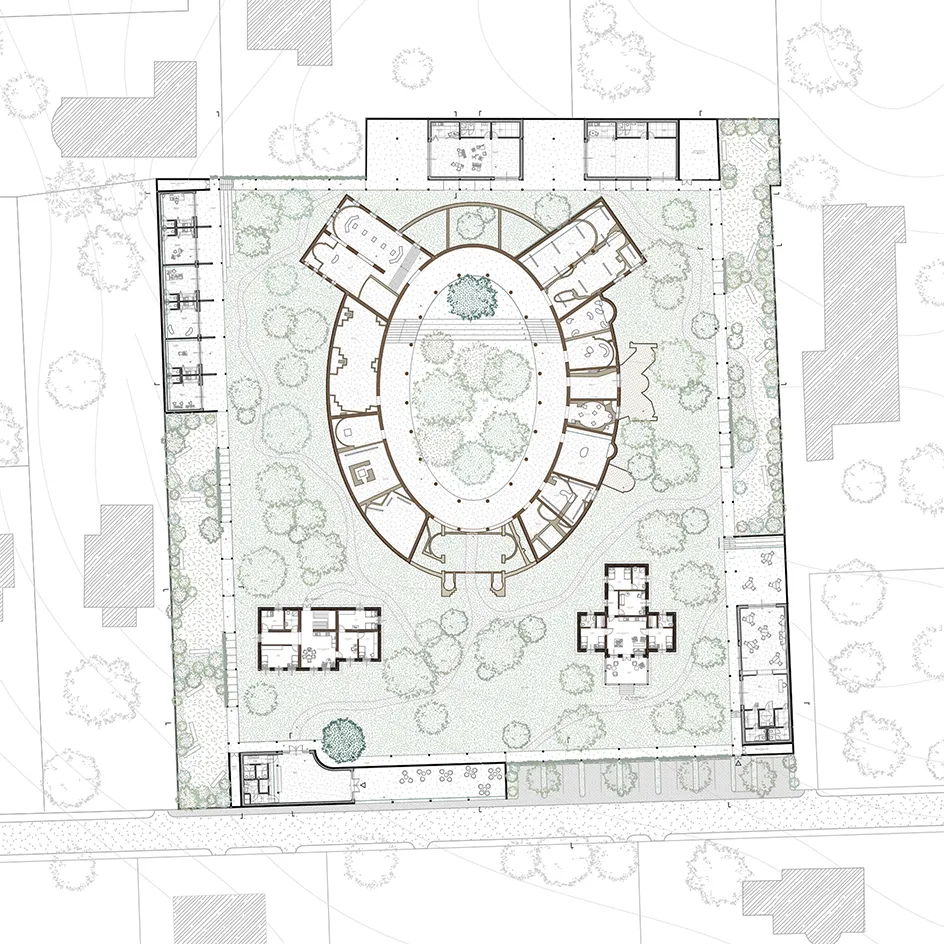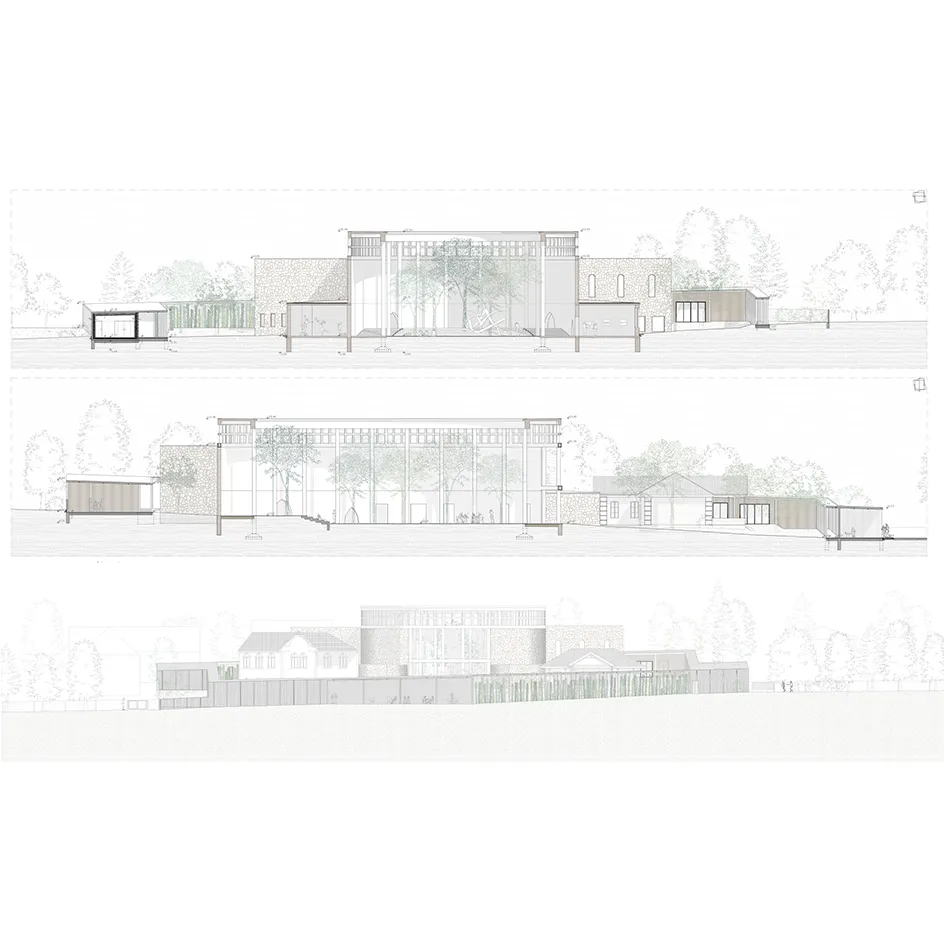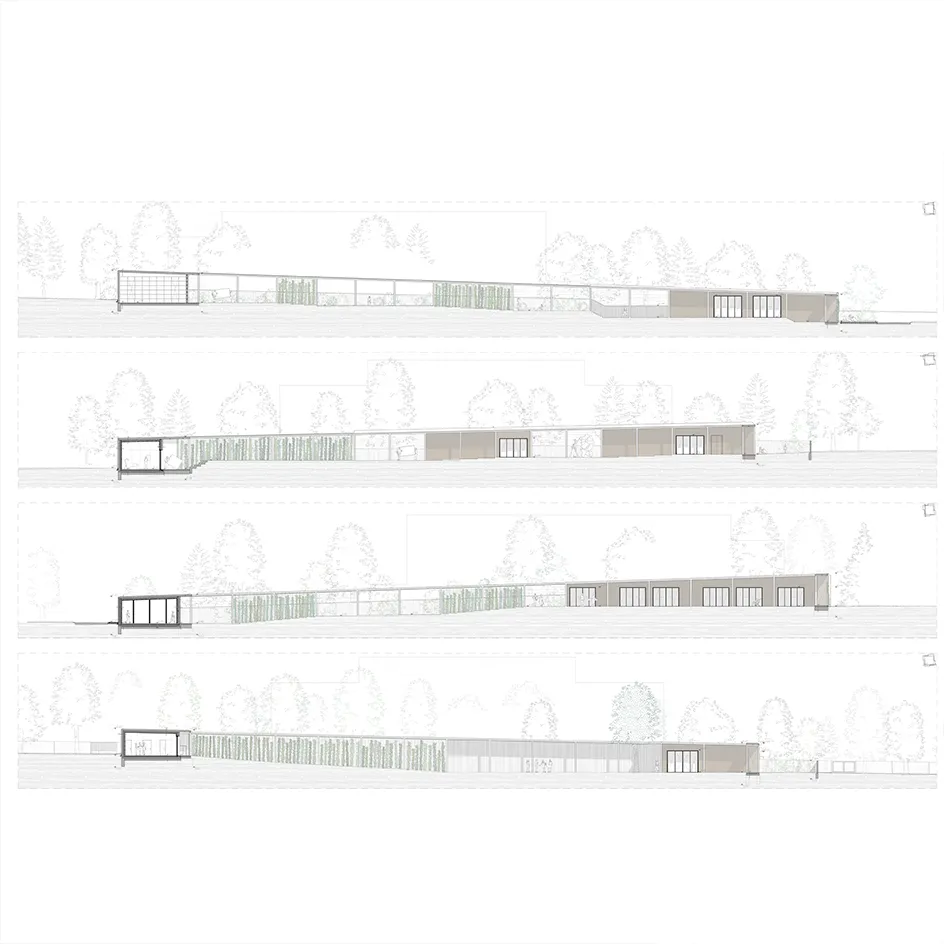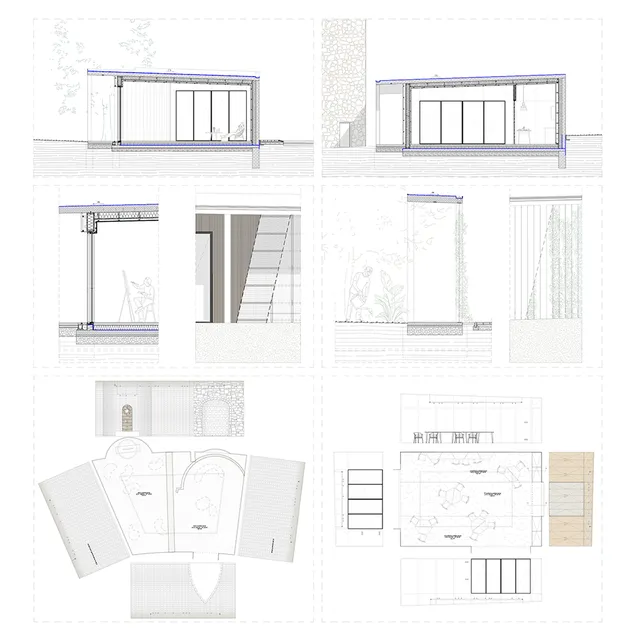
1/10

2/10

3/10

4/10

5/10

6/10

7/10

8/10

9/10

10/10
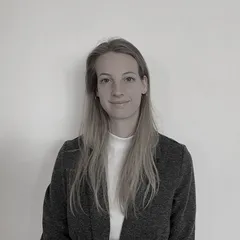
Author(s) / Team representatives
Eszter Mantuano
Profession
Architect
Collective/office
Advisor: Levente Szabó DLA
Project location
Hűvösvölgy, Budapest, Hungary
Project start date
November 2023
Project completion date
July 2024
Photo credits
Eszter Mantuano, régi tervek-képek: Ferkai A: Molnár Farkas, térképek: maps.arcanum
Text presentation of the author/office in English
I graduated from the Faculty of Architecture, Department of Public Building Design, Budapest University of Technology and Economics in 2024. As my studies progressed, I became increasingly interested in the relationship between architecture and memory. During my diploma thesis, I had the opportunity to work on this topic and chose the Church of the Holy Land of Hungary, designed by Farkas Molnár, one of the most unique unfinished buildings of modern Hungarian architecture.
I believe that in such a situation it is extremely important to respect the building and preserve its original values. During my diploma thesis, instead of the usual architectural approaches (rebuilding, adding or demolishing), I made a conscious effort to move away from the existing building, thus giving as much space as possible to its found values.
I consider it important to explore the relationship between architecture and memory, and to seek creative and conscious solutions that contribute both to the preservation of the built heritage and to the exploration of new possibilities.
Project description in English
Farkas Molnár is a justly famous modern Hungarian architect of the first half of the 20th century, known mainly for his villa buildings and his writings in various magazines and newspapers. At the end of his life, however, he designed a building that is in some intellectual tension with his earlier work. This work of art, unique in form and perhaps in spirit, is the last unfinished work of Molnár's oeuvre, the Hungarian Holy Land - Church of Redemption. Inspired by the building's 85-year history and by the questions it raises today, I am looking for answers to the question of how the forgotten torso hiding behind the foliage of Hűvösvölgy is still relevant today, its meaning, its message and its material reality.
Despite its dilapidated and abandoned state - or perhaps because of it - it has a special cultural and architectural value that I think is worth noticing, dusting down and making it relevant and alive again.
The all-arts centre on the site would take the necessary freedom from the constraints of form, content and space, and would be inspired by the Weimar Bauhaus, creating a bohemian, artistic environment where creation, experimentation and exhibition could take place. The process of creation will take place in a framework and green environment surrounding the site, and the display of works (of any kind) will be possible in the Church of the Holy Land itself.
The church will thus be the focal point of the new function, where the work and through it the artist will meet the recipient. Not only the never-to-be-finished building, but also its immediate surroundings are rich in interesting stories, human interventions and spatial situations that will serve as a source of inspiration for visitors to the area. The plan seeks to preserve this diversity, to treat the Church of the Holy Land as a "found object", and to allow it to change rather than to be completed.
